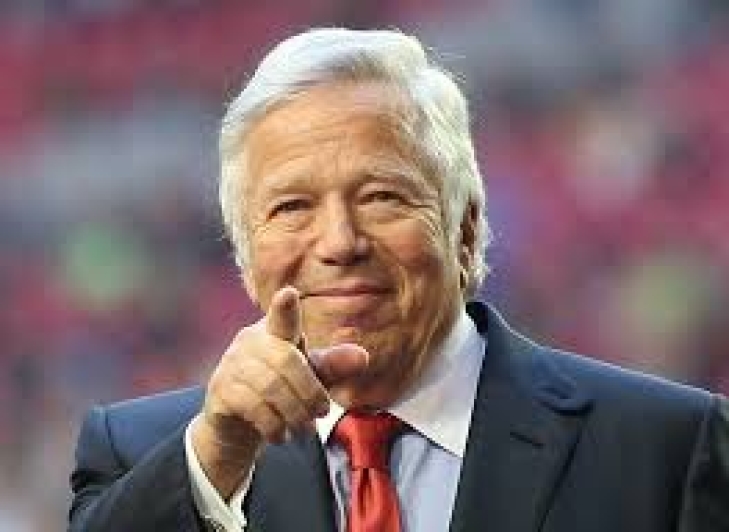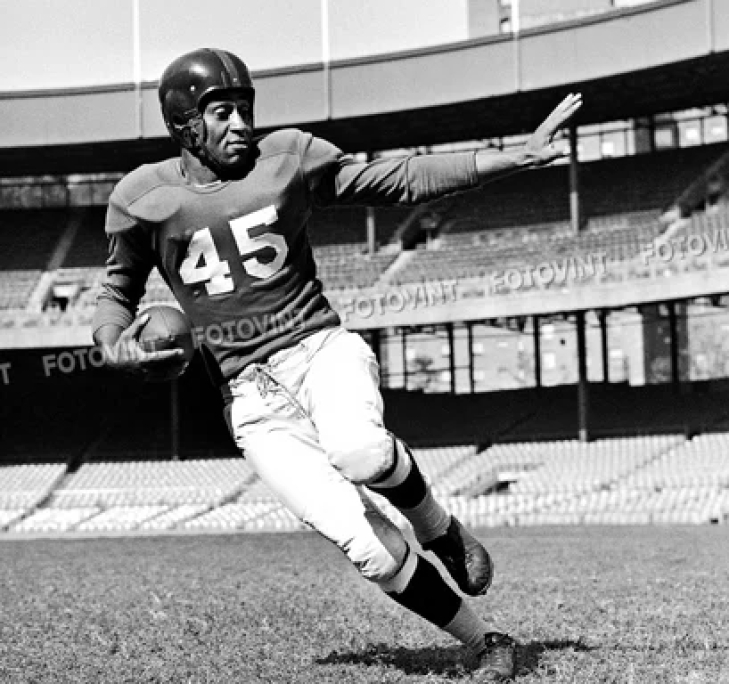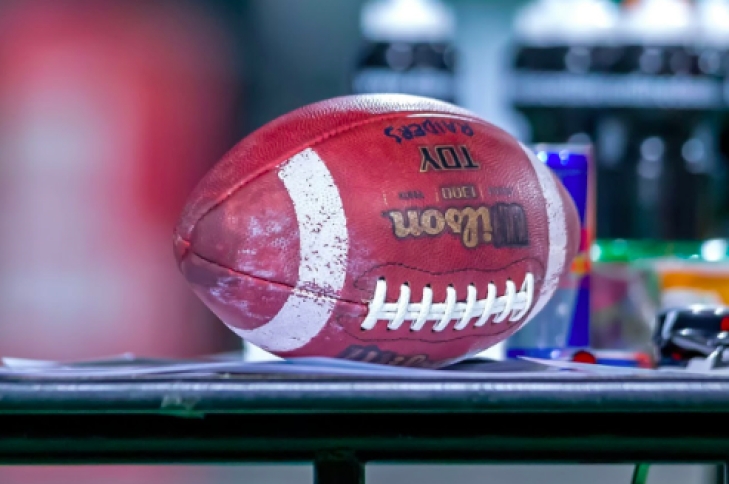
Committee Chairman
The Pro Football Hall of Fame announces 25 Preliminary Candidates for the Contributor DIvision
The Pro Football Hall of Fame reduced the 2025 Contributor candidates to 25 from 47. In a couple of weeks, the Blue Ribbon Committee will reduce this group to nine, and eventually, one name will be put forth as a Finalist.
The names considered are:
Bud Adams. Adams was the owner and founder of the Houston Oilers, where his team won the first two AFL Championships. He owned the team for 54 years until he died in 2013.
Roone Arledge: Arledge was the mastermind behind Monday Night Football and was the head of ABC Sports for years.
Chris Berman: Berman was a football sportscaster on ESPN for decades and is one of the most recognized names in the business.
Howard Cosell: Cosell was on the original lineup of Monday Night Football and was an iconic figure in multiple sports.
Otho Davis: Davis was the Athletic Trainer for the Baltimore Colts in 1971 and the Philadelphia Eagles from 1973 to 1995.
John Facenda: Facenda worked for NFL Films from 1965 to his death in 1984. He narrated multiple films and weekly highlight packages.
Mike Giddings: Giddings founded Proscout, a talent and analytics company.
Ralph Hay: Hay owned the Canton Bulldogs from 1918 to 1922 and catalyzed the National Football League in 1920.
Bucko Kilroy: Kilroy worked in player personnel and scouting for Philadelphia, Washington, and Dallas and would later be an executive for New England.
Don Klosterman: Klosterman was a General Manager for three teams, Houston, Baltimore, and the Los Angeles Rams, and won a Super Bowl as the Colts GM in Super Bowl V.
Eddie Kotal: Kotal was a Scout for the Los Angeles Rams from 1947 to 1961 and was a pioneer in scouting HBCU schools.
Robert Kraft: Kraft is the owner and CEO of the New England Patriots, where he won six Super Bowls.
Virginia McCaskey: McCaskey has owned the Chicago Bears since 1983 and owns a Super Bowl ring.
Rich McKay: McKay was the Tampa Bay Buccaneers General Manager from 1994 to 2003, where he won a Super Bowl. He joined the Atlanta Falcons in 2003 as their GM in 2003 and became the team CEO in 2008.
John McVay: McVay was San Francisco’s Director of Personnel for 21 years and was part of five Super Bowl Championships.
Art Modell: Modell owned the Cleveland Browns from 1961 to 1995 and relocated the team to Baltimore, where the Ravens won a Super Bowl.
Lee Remmel: Remmel was a sportswriter covering the Green Bay Packets for 29 years, and he would also be Green Bay’s Director of Public Relations from 1974 to 2004.
Eddie Robinson: As Grambling State's head coach, he is credited with getting many players ready for pro football.
Art Rooney Jr.: Rooney Jr. has worked for the Pittsburgh Steelers in some capacity since 1961 and is currently their Vice President.
Jerry Seeman: Seeman worked as an official for years before becoming the Director of Officiating.
Seymour Siwoff: Siwoff was the Owner and President of Elias Sports Bureau, the official statistician of the NFL.
Amy Trask: Trask was the first female CEO in NFL history, holding that role with the Oakland Raiders from 1997 to 2011.
Jim Tunney: Tunney was an NFL official from 1960 to 1991.
Doug Williams: Williams made history as the first black Quarterback to start and win a Super Bowl, and he is credited for creating opportunities for other black QBs.
John Wooten: Wooten was the Director of Pro Scouting for Dallas from 1975 to 1991 and would later work in similar capacities for Philadelphia and Baltimore. He has two Super Bowl rings.
We congratulate the candidates who have made it to this stage.
How to Avoid Common Pitfalls in Sports Betting
It is fun to bet on sports, but the methods are hazardous for those who engage in sports betting. It is critical to understand how to avoid such mistakes. This guide demystifies vital strategies to enhance fun and minimize prospect mistakes that lower your probability of winning and impairing your cash.
Understanding Betting Odds
Using probabilities means betting odds are the fundamental basis for any sports stake. They also give the likelihood of an event's occurrence and the payout rate of the event. With Melbet official, bettors can easily navigate these odds types and enhance their understanding of potential outcomes. Understanding how to read the odds lets you determine the potential value and identify the value bets.
There are cases when people need help understanding the odds, leading to severe mistakes. Suppose you must familiarize yourself with how format conversions work or know what each format means regarding probabilities. In that case, you are likely to overestimate or underestimate your risks. For instance, decimal odds of 2.00 are equivalent to 50%, which means that the chances of winning the bet are as good as the chances of getting it wrong when using the toss of a coin. Get accustomed to these numbers — this is more than your chance at a big win; these are your odds of betting right.
Importance of Research and Analysis
A truth you should never forget when gambling on sports is that knowledge is power. Key areas to explore include:
- Team Performance: Some considerations are the sides' recent performances, records between the sides, and any other aspects that may affect the performers.
- Injuries and Suspensions: Some players are instrumental to a team, and their absence can drastically shift the game strategy.
- Weather Conditions: Outdoor games are a common form of sports, and weather can influence nearly everything, from goals to fatigue.
Proper research involves gathering and using information to find the value odds or matchups that can be exploited.
Avoiding Emotional Betting
In sports betting, emotions are known to influence decision-making incorrectly, leading to reckless wagers. Emotional gambling can quickly turn a logical approach into a wild guessing game, starting with betting on a favorite team or continuing an attempt to recover the amount that was lost. The authors propose that controlling emotions is important because it helps to make reasonable business decisions that are primarily profit-motivated.
Identifying Bias
Bias distorts perceptions; thus, hasty decisions are based on emotions rather than actual information. For instance, confirmation bias finds you seeking information in a way that supports prior hypotheses, disregarding any evidence that goes against it. Another mistake is the 'recency effect,' which means that recent successes or failures affect decisions more than overall trends. It is also essential to do the same to avoid these biases; look at the gambling history and try to analyze it. Knowing your biases, you can wager more fairly and lose less money than you should otherwise.
Practicing Discipline
Punctuality is one of the critical aspects of sports betting. A good example is that by setting and adhering to a betting budget, you only lose what you are willing to. It is also advisable to have some plan — whether that is putting a certain amount of bets every week or being selective in the sports or tournaments you're gambling on. Self-discipline involves withdrawing from the temptation to recover losses or increase gains. This is important in maintaining a firm base, since the regularity in the approach institutionalizes the randomness of betting into a stable product.
Recognizing Betting Scams
Advanced betting scams are the order of the day, targeting individuals who wish to make giant fortunes out of gambling. So, let's take a closer look at the things that must be avoided to remain protected. Here are some red flags to recognize and avoid:
- Guaranteed Wins: Fraudsters always promise things like having insider information or being almost sure to win. Real betting doesn't promise that everything is sure or that you are inevitable to win.
- Upfront Payments: If a tipster asks for cash before offering selections, it is a fraud. If the company is legitimate, it will only request money once it proves its information is credible.
- Fake Endorsements: Scammers may pretend to use information from genuine references as fake testifiers or logos from well-known companies. Endorsed by such agencies, they should be verified by visiting official websites.
If you maintain an attitude of skepticism towards such offers, you will avoid being conned into wasting your money as you try to make it on the online trading platform.
Keeping Realistic Expectations
Of all sectors where odd comparing is done, sports betting requires a correct mentality to avoid emotional breakdowns and bankruptcy. It is also helpful to view losses as part of the process because it keeps you from making unwise decisions, such as doubling up to try to get a refund. Betting is not about making money in a few months, but about playing smart and waiting for a breakthrough.
However, you can withstand fluctuations with the desired objectives and a proper attitude towards betting. Finally, instead of dreaming of becoming a millionaire overnight, it is worth gradually improving. This way, it is balanced and will help safeguard your wallet and make the process fun.
Final Thoughts
Betting is fun but needs to be done carefully and with some measures. Skip the fake sites, manage your feelings, and only wager with a strategy in mind. Controlling and making betting an exciting and healthy pastime is possible if you stick to achievable goals.
The Pro Football Hall of Fame Revisited Project: 1967 Final VOTE
1967 Pro Football Hall of Fame Revisited Project Class.
Here we are! Again!!
If you have been following our Pro Football Hall of Fame Revisited Project, you know we have asked the rhetorical question: What if the PFHOF began in January 1946?
After soliciting and obtaining a passionate group of football fans and historians, we sent out a ballot for a Preliminary Vote, in which we asked each voter to give us 25 names as their semi-finalists and 5 in the Senior Pool. We then asked the group to vote for their 15 Finalists in the Modern Era and 3 in the Senior Category. The final stage was to vote for their five Modern Era inductee and one Senior inductee.
This is the result of the 22nd official class;
Below are the final results of this project based on 32 votes,
Remember that the group took a vote in “1966”, and we have reverted back to the top five candidates entering the Hall PROVIDING THEY MAKE 50% of the vote. This will be put to a vote again in “1969”.
This is for the “Modern Era”
*Bold indicates they have been elected to the Pro Football Hall of Fame Revisited Class of 1967:
|
Player |
Year of Eligibility |
Vote Total |
|
Emlen Tunnell DB |
1 |
30 |
|
Art Donovan DT-T |
1 |
23 |
|
Gene Brito DE-E |
2 |
18 |
|
Ward Cuff WB-QB-HB |
15 |
12 |
|
Bill Osmanski FB |
15 |
11 |
|
Marshall Goldberg FB |
14 |
10 |
|
Bobby Dillon S |
3 |
10 |
|
Buckets Goldenberg G-BB |
17 |
8 |
|
Pat Harder FB |
9 |
7 |
|
Alan Ameche FB |
2 |
7 |
|
Bruno Banduccii G |
8 |
5 |
|
Charlie Conerly |
1 |
5 |
|
Woody Strode E |
13 |
2 |
|
Bucko Kilroy G-MG-T-DT |
7 |
2 |
|
Vic Sears T-DT |
9 |
0 |
This is for the “Senior Era”,
*Bold indicates they have been elected to the Pro Football Hall of Fame Revisited Class of 1967.
|
Hunk Anderson |
17 |
16 |
|
George Christensen |
4 |
10 |
|
Al Nesser |
10 |
2 |
|
None of the Above |
N/A |
4 |
About the 1967 Inductees:
Emlen Tunnell DB, NYG 1948-58 & GNB 1958-61: Inducted in the Pro Football Hall of Fame Revisited Project in 1967 on his 1st Ballot. Inducted into the actual Pro Football Hall of Fame in 1967.
After playing at Toledo, a stint with the Coast Guard, and another college football run with Iowa, Emlen Tunnell would make Giants' history as the first African-American they signed. As it turned out, Tunnell would also become the best signing they had ever done.
Tunnell blossomed into a ball hawk, petrifying Quarterbacks and infuriating Receivers for over a decade. From his rookie season to 1957, Tunnell never had a year where he had less than six Interceptions, and he peaked with a 10-INT year in 1949. Tunnell was named to the Pro Bowl annually from 1950 to 1957, earning four of those years a First Team All-Pro spot. He was also vital to a loaded Giants team that won the 1956 NFL Championship.
He would have 72 Interceptions over his Giants career, which remains a franchise record. Overall, he had another seven with Green Bay and was the all-time leader in Interceptions at the time of his retirement.
Tunnell was also used as a returner, and he twice led the NFL in Punt Return Yards, and he brought back five punts for a Touchdown. He would accumulate 2,206 Punt Return Yards with the Giants (and another three with Green Bay), and he was the all-time leader in Punt Return Yards at his retirement.
Tunnell’s contract was sold to the Green Bay Packers after the 1958 Season. He played under the legendary Vince Lombardi for three seasons, earning another Pro Bowl and a second NFL Championship.
He entered the Pro Football Hall of Fame in 1967, and Tunnell was named one of the NFL 100th Anniversary Team. The Giants also chose Tunnell for their Ring of Honor in 2010.
Art Donovan DT-T, BCL 1950, NYY 1951, DTX 1952 & BAL 1953-61: Inducted in the Pro Football Hall of Fame Revisited Project in 1967 on his first Ballot. Inducted into the actual Pro Football Hall of Fame in 1968.
Known for one generation for his radio show and David Letterman appearances, another generation knew him for his excellent defensive play and “Bulldog” like tendencies. Donovan was a member of the first version of the Baltimore Colts, which folded in 1950, and then the New York Yanks, which folded the following year.
Coincidentally, it happened again when he signed with the Dallas Texans in 1952, making him the only player in NFL history to play for three teams in three years that all went out of business (though the new Baltimore Colts bought all the Texans’ assets, which is how he came to Baltimore a second time).
That was when Donovan’s career took off as he rattled off five consecutive Pro Bowls and four straight First Team All-Pros. Donovan was also a member of the back-to-back NFL Championships in the late ’50s.
Gene Brito, DE-E, WAS 1951-53 & 1955-58, RAM 1959-60. Inducted in the Pro Football Hall of Fame Revisited Project in 1966 on his 2nd Ballot. Inducted into the actual Pro Football Hall of Fame in 2020.
A late round draft pick by the Washington Redskins from Loyola Marymount in 1951, Gene Brito would play on both sides of the ball in his first two seasons. The End was certainly solid in his role, but by 1953, Brito was focused on the Left Defensive End position and was chosen for his first Pro Bowl.
Brito would have another four-year streak of Pro Bowls (1955-58) and likely would have netted another one in 1954 had he been in the league (he opted to play in the Canadian Football League with the Calgary Stampeders instead) and in 1955 the Washington D.C. Touchdown Club named him the NFL Player of the Year. Brito was so beloved in Washington that he was one of the first players to host a local television show while still as an active athlete.
The defensive star would play his final two years with the Los Angeles Rams.
Hunk Anderson G-C, CHI 1922-25 & CLE 1923. Inducted in the Pro Football Hall of Fame Revisited Project in 1967 on his 17th Senior Ballot. Was never Inducted into the actual Pro Football Hall of Fame.
It took a long time (from 1946 to 1967), but Hunk Anderson finally breaks through on his 17th year on the Senior Ballot.
A product of Knute Rockne at Notre Dame where he was part of two undefeated Fighting Irish squads (1919 & 1920), Anderson allegedly played under a summed name for the Canton Bulldogs in the first two years of the NFL’s existence. He later played for George Halas and the Chicago Bears where he was a top Lineman for four years and later was named to the 1920s All-Decade Team.
The Best Non Hall of Fame NFL Players
The world of sports is full of opinions, and the NFL is no different. While fans and experts will often argue about teams and player ability, when all is said and done there are some that rise above these discussions to achieve respect from all parties, especially after their careers have finished.
In some cases, sports fans are happy to put their money where their mouth is by gambling on games and player props. Fans will shop around for the best odds and having a good understanding of teams, players, tactics, and performances in different circumstances can all help.
While many states now offer legal sports books, expert reviews on offshore sportsbooks can still come in handy for consumers in prohibitive states or, for those looking for more competitive odds. After all, the more analyses you read, the better your general knowledge of football.
One market that can cause a lot of controversy is the NFL Hall of Fame, where consumers can bet on who they think will be inducted, with the top players earning a place.
There are just under 400 members currently in the Pro Football Hall of Fame, with between 4 and 9 added every year. The selection committee's criteria for inducting players focuses on player contributions to the sport, but there are still some big names that haven't made the cut yet.
Reggie Wayne
Reggie Wayne is a name that will probably be inducted into the Hall of Fame sooner rather than later. 2007's top receiving yards player and key performer in the Indianapolis Colts' first Super Bowl in 2006 make him a contender for a place.
Torry Holt
Torry Holt helped St. Louis to the Super Bowl and finished as the league-leading receiver on two occasions. He made it into the NFL All-2000s Team and participated in the Pro Bowl seven times.
Sterling Sharpe
Sterling Sharpe's career was sadly cut short by injury, but in his seven seasons with the Green Bay Packers, he was able to prove his worth as one of the best receivers of his generation.
During his career, he led the way in yards, touchdowns, and receptions, was an All-Pro first-team player three times, and was selected for the Pro Bowl five times.
Willie Anderson
Willie Anderson has come close to making it into the Hall of Fame, making it to the finals of the selection process three times. The former Bengals lineman made the All-Pro and Pro Bowl teams for four consecutive years and it seems like a matter of time before he gets the nod.
Ken Anderson
Ken Anderson remains the leading passer in the history of the Cincinnati Bengals and was named the AP Offensive POTY, League MVP, and All-Pro first-teamer in 1981.
When he retired he was in the NFL's top ten of all time for passing yards and passer rating and has made it to the semi-finals of the HOF on two occasions.
Hines Ward
Hines Ward was at the Steelers from 1998 to 2011 and remains their all-time touchdown, yards, and receptions leader. The 2005 Super Bowl MVP earned four Pro Bowl selections in a row and is widely regarded as the NFL's leading physical receiver of his generation.
Conclusion
The selection committee has a tough job and can only add a limited number of former players every year. There is still time for the players mentioned above to be inducted, and there are plenty more stars of the game that have not yet had the honor.
This year’s HOF saw Dwight Freeney, Patrick Willis, Andre Johnson, Steve McMichael, Julius Peppers, Randy Gradishar, and Devin Hester inducted, and fans will be eager to hear who will be joining them next.





